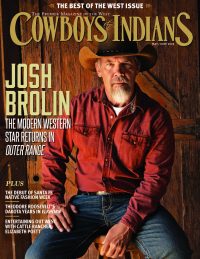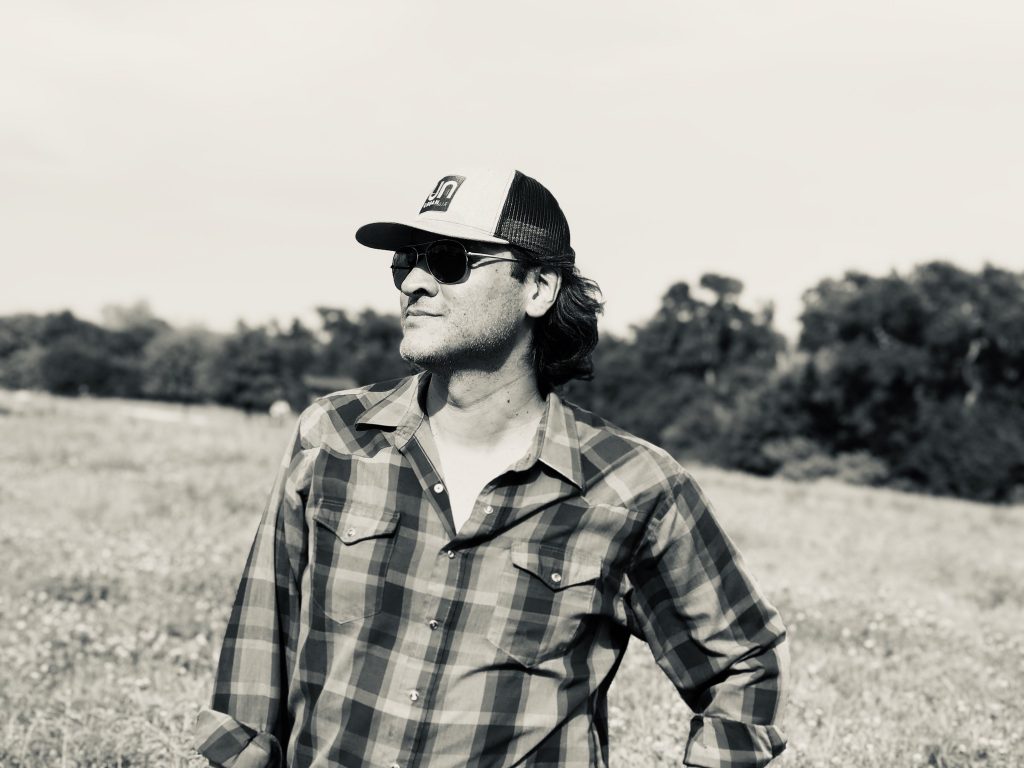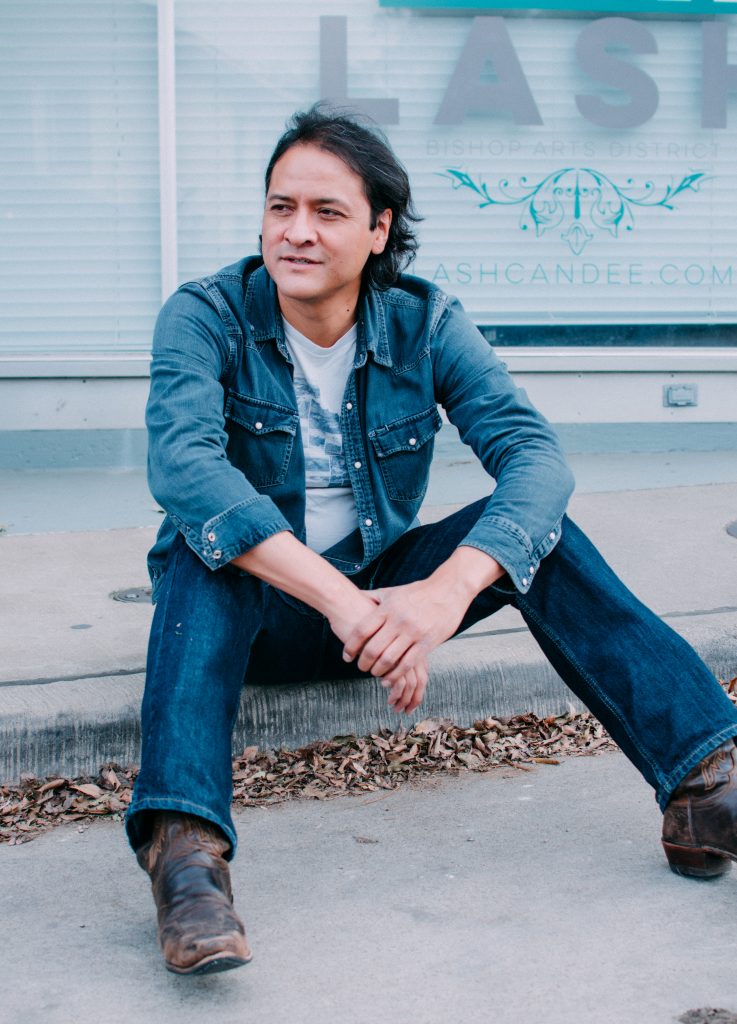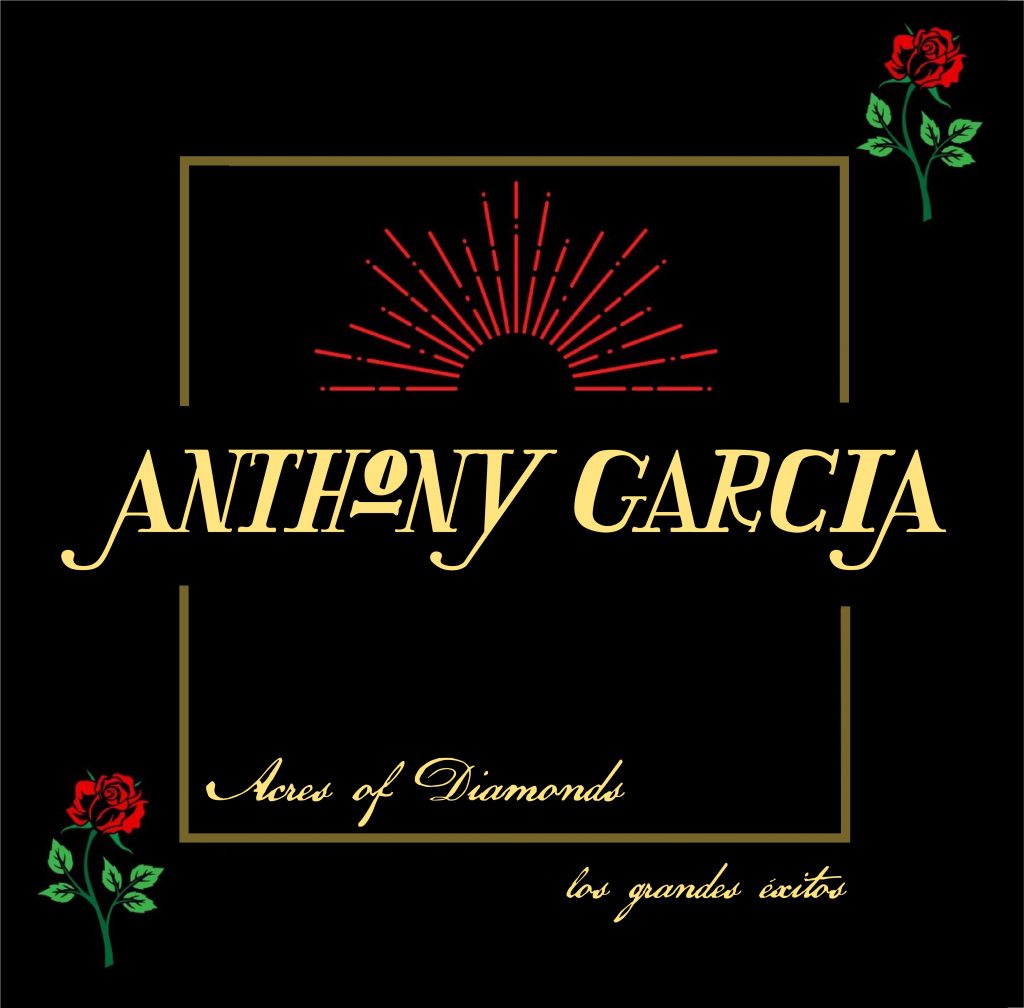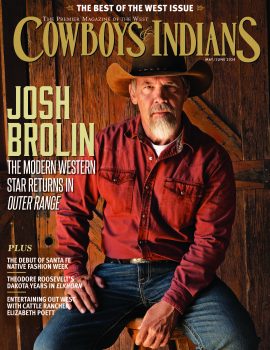The Texas-based singer-songwriter-guitarist-pianist makes seriously evocative music described as “cinematic Americana.”
Anthony Garcia’s new album, Acres of Diamonds, might give your imagination a workout when you try to describe it.
Press in Texas has described his music as “mariachi-esque Queens of the Stone Age” and “like something out of a Cormac McCarthy novel,” and proclaimed that his songs seem like the “missing tracks from a Robert Rodriguez soundtrack.” Media in Paris dubbed his music “Americana Hypnotique.”
My best attempt after immersing myself in the distinctive ambience of Acres of Diamonds and the title track we’re premiering here is “if Ennio Morricone and Dwight Yoakam scored a contemporary western.”
But why bother struggling for descriptions when you can listen to it and lose yourself in its alternate dreaminess and intensity.
There’s a kind of poetic foreboding and romantic yearning driving the ghosts of the people and places that populate these songs. It’s an ethereal soundscape for the beautiful outlaw road trip in your mind. You might be here on the dusty highway of life heading toward the setting sun, but if you listen and look, out there in the distance, you can sort of make out those acres of diamonds.
We talked with Garcia about the new music and what songs make his Feel Good Playlist.
Cowboys & Indians: What is the story behind this song?
Anthony Garcia: I’m not exactly sure why I wrote the song (as is not uncommon in songwriting) and didn’t really have any plan for a storyline, per se. But, after analyzing the lyrics, I’d say the song is about someone who has been through a lot and is asking simply for love. Not even necessarily romantic love. Just love in general. “Acres of Diamonds” is actually the title of a book, written sometime at the beginning of the last century, about generating monetary wealth. I am not familiar with the book at all but heard or read the title somewhere years ago, and the image intrigued me and stuck with me. So, I finally got around to writing a song borrowing its title.
C&I: This song is the title track from the album. What made you name the album after this song? How is the song central to the album?
Garcia: I was briefly a musician on a cruise ship in Hawaii and this song was written during that time. Just before ending my contract there and coming home, I learned my dad was ill and he ultimately passed shortly thereafter. I had just written this song when I found out about his being ill. Although I don’t mention him specifically or anything about this in the lyrics, I think about him when I sing it and somehow feel it’s a little prayer, if you will, for him, to him, and for others going through a difficult time. It is also the last song/newest song to appear on the album. So, ending the album with this song (and I often end my shows with it) was sort of my way of leaving the listener with a message of positivity — something to take along with them.
C&I: What are your favorite lyrics?
Garcia: I think it’s the last verse: Acres of heartache / Acres of Love / Acres of things we can rise above / Acres of things I’ll never ask you of / Just give me Acres of Love.
It’s my favorite because I think it sums up what the song is about and is simply asking for personal, and possibly universal, unconditional love from someone and/or others.
C&I: How did the song come together?
Garcia: This song is one that came together very easily. It just essentially appeared. The whole thing was written maybe in the span of a couple of hours. Don’t be misled. This doesn't happen to me often at all. In fact, it’s actually rare that this happens.
C&I: What about the song makes resonates with you and your fans?
Garcia: The main thing for me as a performer with this song is that it showcases my voice, so it makes it a real pleasure to sing it live when I do. The vocal line really spans the better part of my vocal range. And production-wise, I think we really captured a good mix of an Americana feel mixed with ethereal elements, like the doubled electric guitars, and I particularly like the violin being run through a synth module. Although it could easily be mistaken for a synthesizer keyboard, the high notes are actually a violin being played, as Megan (MeganBerson.com) plays it live.
C&I: What are you most excited about with regard to the album coming out soon — July 17, right?
Garcia: Great question! The entire process of making this album, from the first note that was recorded to its July 17, 2020, release date, spans nearly two years. This was due to scheduling, touring, and other related logistics, and, of course, the pandemic and shut-down. I am not complaining, because I am very proud and satisfied with the work all of the musicians and production team (transientmic.org) have put into. I am simply ready to be able to share these songs with my fans and have the music out there!
For more on Anthony Garcia, visit his website, or follow him on Facebook, Instagram, YouTube, or Spotify. To preorder the album, click here.
Anthony Garcia’s Feel Good Playlist
“Mamas Don't Let Your Babies Grow Up to be Cowboys” — Willie Nelson. This song is the first time I ever heard Willie's voice. I was 8 years old, and it was at a friend's house. I felt, even at that age, that this was the voice of some kind of angel: the truth, purity and conviction it possessed. This song will always be at the top of any of my favorite songs list!
“Piel Canela” — Eydie Gormé y Trio Los Panchos. Discovered this in my mom's vinyl collection from 1964 when I was a kid.
“Everybody Loves the Sunshine” — Roy Ayers Ubiquity. Because ... everybody loves the sunshine.
“A Little Soul” — Pete Rock
“Whippersnapper” — Wayne Krantz. This NYC trio moves like a school of fish, playing to each other and to serve the song. Perfect summer moped music. Recorded Live at 55 Bar, West Village, NYC.
“I Don't Know” (Tribute to Randy Rhoads) — Ozzy Osbourne. Including the first track, but the entire album is just a feel-good album. Randy Rhoads is one of the most underrated and influential guitarists in rock, on par with Eddie Van Halen, who was his rival during the ’80s in the California rock scene. Randy was straight-edge and a true student of music and guitar, specifically classical guitar. He would, while on tour with Ozzy, seek out the best classical guitar teacher in each town they played and take a lesson. He was killed at a very young age while on tour with Ozzy in a freak prop plane accident. This one is "feel good" and dear to the heart.
“Spanish Castle Magic” — Jimi Hendrix. Self-explanatory.
“It's Been a Long, Long Time”— Chet Atkins and Les Paul (Chester and Lester). This is a duet album by the two guitar legends/masters. Again, I’m including the first track of this album, as the whole album is superb. As the album rolls on, one can feel the progression of an impromptu, live recording session, and the playfulness between the two masters unfolding in the studio. It plays like a documentary or a snapshot of a friendship. This might be the “feel good” album to end all “feel good” albums, with guitar chops to spare.
“Waltz for Ruth” — Pat Metheny. This minimalistic and sublime nylon string and upright bass collaboration is my go-to "Saturday-evening-nothing-to-do-kick-back-and-listen" album. This album does not try too hard to be laid back or to impress, yet it accomplishes both with ease. Again, including the first track only, but the entire album makes the list.
“Night and Day” — Bill Evans. (Everybody Digs Bill Evans) Arguably one of the most influential, prolific, technically savvy, and innovative jazz musicians, Bill Evans ushered in an era for jazz pianists. I have a soft spot for Bill and his use of colorful chord clusters, and cascading piano lines that are like tiny waterfalls because he draws heavily on turn of the century French composers like Debussy, Satie, and Ravel in his playing. His lush style is contrasted and complemented in this track by drummer Philly Joe Jones's playful interjections and inversion of the beat. A breakthrough album.
“Tous les Garçons et les Filles” — Françoise Hardy. Speaking of France ...
“Blue Suede Shoes” — Carl Perkins. I love this version of the song, not only because Carl Perkins wrote it, but because of the feel of this recording, as if it were a demo of just any other song. You can hear all of its imperfections in this recording, and Sun Records’ owner and producer, Sam Phillips, undoubtedly insisted they be left in. There is a hunger in this version in both the performance and recording that are harbingers of the tsunami that we all know was soon to follow...
“Pilots (On a Star)” — Goldfrapp. Goldfrapp is the pioneer of the "eccentric chanteuse" archetype that artists like Bjork, Madonna, and Lady Gaga would later model themselves after. This song is merely one example of her unique sense of melody, use of innovative chord progressions, lyrical proficiency, and overall sensibility for competent music composition. This song literally makes you feel like you are flying through a cloudy, sunny, summer sky.
“Beau Soir” (Claude Debussy, composer) — Barbara Streisand/Leonard Bernstein. There is so much to this composition and performance. First, this song could almost be laid on top of the previous song (Goldfrapp/“Pilots”) and one could hear the Venn Diagram overlapping in the tonality, melody, ethereal and dreamlike quality of both songs. Debussy, as a composer, was a master of this. Not to mention the collaboration between one of America's greatest conductors, Leonard Bernstein, and the song’s unassuming interpretation by “pop” vocalist, Barbara Streisand. Streisand was nervous at the daunting task of recording the pieces on the album, worried about the criticism she might face from the purist critics, as she was not a “classical” singer. Bernstein was reassuring and encouraging and conducted her to sing these “classical” songs in her own unique “pop” style, and to try for nothing more.
Photography: Images courtesy Eric Panico, Keri Smith, Moxie Rose Photography



